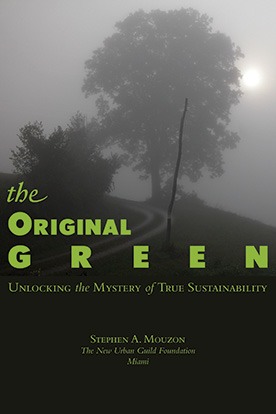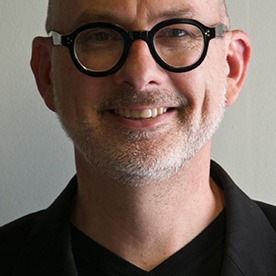search the Original Green Blog

People on the Street, Lovable Things Along the Way, and the Magic of the City are three Walk Appeal factors I have no idea how to measure, but they clearly contribute to making more walkable places. How do you think they might be measured? And what other immeasurables have I left out? As I was writing this, George Osner tweeted a link to a new post by my friend Kaid Benfield on Walk Appeal. Kaid lays out several other immeasurables I hadn't thought of, which I'll comment on as well.
People on the Street

Few things make a walk more interesting than seeing lots of other people along the way, while a walk down deserted streets might even be spooky. There are several reasons for this. First, we are social creatures so we need to interact with other people regularly. And people are entertaining to watch. And if there are lots of people on the street, that's confirmation that others think it's an interesting places as well.

Length of stay is more important than you might think. Walk a half-mile, and you'll be on the street for about ten minutes. But stop at a sidewalk cafe for lunch, and you may be there for an hour or more. Sidewalk shopping, other types of eateries, and gathering places of other sorts are useful as well.
This factor isn't completely immeasurable because people on the street can be counted at various times of day. But what are the people thresholds at which a streetscape goes from spooky to just plain boring to nominally interesting to intriguing to teeming with vitality? And what's the upper limit beyond which "nobody goes there anymore because it's too crowded" as Yogi Berra once observed?
Lovable Things Along the Way

Buildings and site elements along the way that are lovable clearly enhance Walk Appeal. This principle is so obvious as to require little explanation. Who would not rather walk where there are things of beauty rather than through a landscape filled with ugliness?
Buildings are the top candidates for creating lovability along the way because each building face, if well-composed, can be beautiful. And if there is some degree of agreement on how to build in the region, then the entire streetscape can be harmonious as well, as this one is.
All other elements in the public frontage (between street and property line) and the private frontage (between property line and building face) are candidates as well. Thirty years ago, most cities only installed "cobra head" streetlights downtown, for example, but most have converted to much better post lamps in recent years.
Magic of the City

Great cities hold promises of secret delights waiting to be discovered just around the next corner… maybe a little plaza you don't yet know, like this gem I stumbled across recently while traveling in a city I've visited numerous times. This promise of undiscovered magic entices people to get out and explore, even if you live there. For example, nine years after moving to South Beach, I still get out and explore little nooks and crannies I haven't seen before. Sprawl, meanwhile, is a place we know like the back of our hand, so there's nothing to discover there.
Safety

The remaining immeasurables, beginning with this one, are based on Kaid's items. He makes the point that people are discouraged from walking in a place with otherwise good Walk Appeal metrics if it's reputed to be unsafe. I visited Over-The-Rhine in Cincinnati last year. For decades, locals decline to go there. Today, it's it's in the middle of a strong recovery and I felt perfectly comfortable walking everywhere and photographing streets of architectural treasures most people haven't seen in years because of fear. The high standard of safety is illustrated in the image above: is it a place you'd let your children play?
Nature

There's no doubt that nature in many forms enhances Walk Appeal. "A Walk in the Park" is synonymous with things that are easy to do. But lesser doses of nature will do as well. Walking beside the park is almost as good as walking through it. This image illustrates a canopy of trees along a river embankment. Smaller street trees are effective as well.
Time, Weather, and Burdens
Time of day and available time are two big factors. Safety varies widely in many places between noon and midnight, for example. Also, have you cut your available time so short that you simply can't walk there in time? South Beach is hopping 24 hours a day, so I feel perfectly safe walking home at any point during the night. And it's difficult enough to find a parking place that I can almost certainly walk to work faster than driving. The only two reasons I ever drive to work is if it's raining enough to flood the sidewalks (I have an umbrella) or if I have a heavy load of some sort to carry.
Sound

Kaid makes the point that sound along the way can make a huge difference. Loud traffic noise or construction noise, for example, can be a huge negative for Walk Appeal.
There are two types of positive sounds: those we provide, and those we set the stage for. A fountain provides the sound of falling water directly into the environment. The sounds of water has the side-benefit of making people feel cooler on a hot day. We set the stage for pleasant sound to occur by allowing sidewalk cafes to provide music (either live or recorded) and by creating a place that's vibrant enough that the street musicians show up.
What have we missed? And can you think of any way of quantifying any of these items that seem to me to be immeasurable? Thanks in advance for your comments!
~Steve Mouzon
Other Sprawl Recovery posts on the Original Green Blog:
Sprawl Repair - A 12-Step Program
I've also started a Walk Appeal BlogOff that lists everyone's posts on Walk Appeal.

You'll receive an email from me with the subject line "Mouzon Design: Please Confirm Subscription." Click Yes to confirm your subscription for Walk Appeal book updates.


